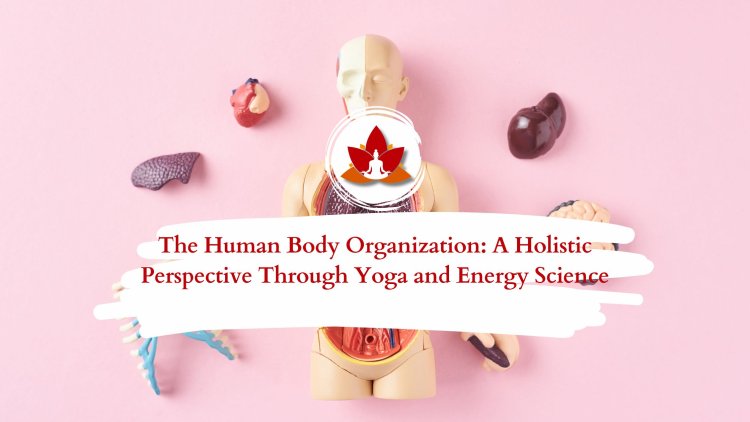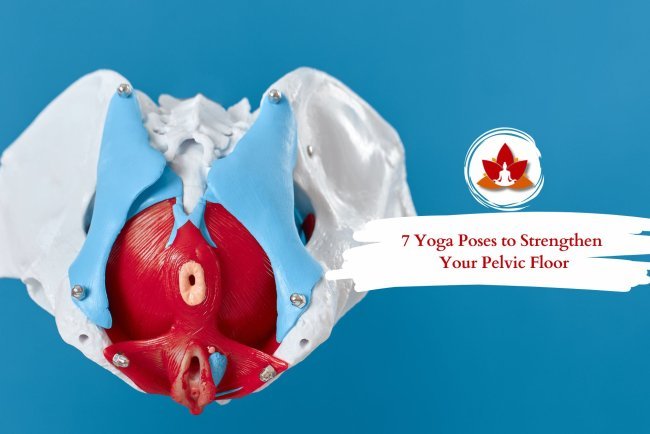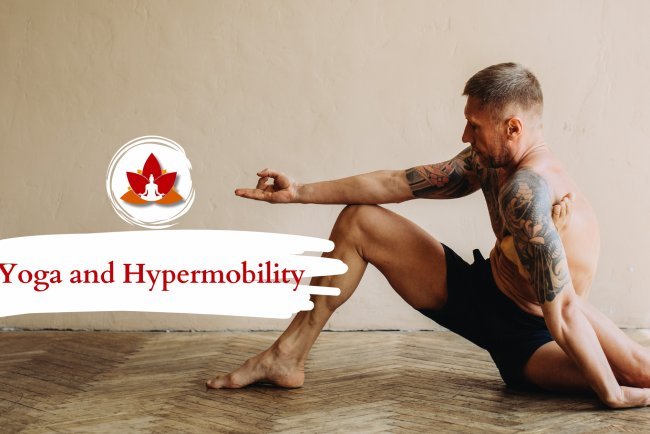The Human Body Organization: A Holistic Perspective Through Yoga and Energy Science

A human body is an exemplary structure of complex organization: many systems intertwined with each other to produce sustenance for life. In the yoga philosophy, the body is not only perceived as a physical structure but as a vessel for subtler energies, prana (vital life force), and the aura (electromagnetic field). Modern science is increasingly moving towards these ancient concepts and recognising how energy fields relate with physical matter. We may now look at the levels of human body organization-from gross to subtle-and discuss what they mean in yoga and modern research.
Systems: The Functional Framework
The human body is made up of systems like the respiratory, circulatory, nervous, and digestive systems. All these body parts have a role to play in maintaining the flow of prana or life force in yoga. The respiratory and nervous systems are directly affected with breathing exercises; they balance the energy channel or nadis and encourage relaxation.
-
Circulatory System and Prana: The life flow is maintained by blood, which carries oxygen, or prana, throughout the body.
-
Nervous System and Meditation: Dhyana (meditation) practices regulate the brain waves, improve concentration, and reduce stress
-
Digestive System and Yogic Nutrition: Healthy digestion is thought to be essential for maximizing energy levels. Foods containing prana are raw, plant-based, fresh, and contribute to a vibrant energy field.
Organs: The Subsystems of Life
Organs are body parts, such that serve specific, defined physiological purposes. Techniques of yoga focus on the fact that, with attentive awareness of organs, healing can occur. Examples are:
-
Heart: The anahata, or heart chakra, as a function of the heart, calls to mind love and compassion.
-
Lungs: Breathwork techniques energize the lungs, increasing prana flow.
-
Brain: Meditation is thought to awaken higher states of consciousness by paying attention to the brain centers.
Modern research supports the idea that organs produce low-frequency electromagnetic waves, which are generally part of the body's energy field.
Tissues: The Cellular Building Blocks of Organs
Tissues are the accumulation of cells that make up the structural and functional framework of organs. Yoga nidra directly repairs and heals cells and increases tissue regeneration. Some asanas, such as twists and inversions, help increase blood flow to tissues, which in turn increases detoxification and healing.
From a biological perspective, it is thought that tissues hold experiences emotionally. Myofascial release treatments on connective tissues show how trauma and stress may be stored in the body in energetic terms.
Cells: The Basic Living Units
The cells are the smallest living units, which carry out basic functions like metabolism and energy generation. In yoga, the basic unit of cellular well-being can be cultivated through different activities like:
-
Deep breathing: It enhances oxygen supply to cells and thereby intensifies production of energy.
-
Meditation: Reduces oxidative stress, which reduces cellular damage.
-
Fasting and Detox: Cellular cleansing and induces autophagy or renewal of cells.
Scientific studies have found that cells release bio-photons or light particles, which proves the presence of subtle energy communication in the body. This resonates with yogic ideas about inner radiance.
Molecules and Atoms: The Material Foundations
Chemical building blocks of the human body, from DNA to neurotransmitters, molecules and atoms build everything. Water constitutes 70% of the body and is very sensitive to thoughts and emotions-what Dr. Masaru Emoto demonstrated through his water crystal experiments: Positive emotions create harmonious patterns in molecular structures. This is an example of how the physical body is affected by intentions and consciousness.
Energy: The Substance of Life
Energy flows through every level of the human body-from cellular metabolism to subtle vibrations. In yoga, the life force that flows through nadis or energy channels and accumulates in chakras or energy centers is called prana. When prana flows unobstructed, it gives a feeling of life and mental clarity. A blockage in the energy flow can cause illness and emotional imbalance.
Modern Science and Energy Fields
-
Kirlian photography captures the aura, showing the electromagnetic field around living beings.
-
HeartMath Institute studies reveal that the heart is a powerful electromagnetic field that influences emotions and well-being.
-
Quantum Biology studies the system of energy transfer at the molecular level. This mechanism would explain how energy could work on living structures, providing a basis for the hypothesis that thoughts and energy can influence health.
The Aura: The Electromagnetic Field Around Us
The aura refers to an energetic field situated outside the body, which typifies emotional, mental or physical health. Ancient yogis called this energy field tejas or ojas. Pranic healing or Reiki, heals blockages in the aura, bringing back energy balance.
Scientific instrumentation such as the biofeedback machine measures the shifts in the electromagnetic field of the body, testing the aura.
The Human Body: A Holistic Structure
The human being is more than biology-it is a physical, mental, emotional, and energetic vessel, all which contain the fabric of life. Yogic philosophy extends past anatomical considerations in forming the view that the human experience is layered, interwoven, and dynamic, with every layer of the human having the function of physical, energetic, mental, intellectual, and blissful working together for wholeness. This concept is represented by the Pancha Koshas or the five sheaths that signify a gradual progression from the gross, the physical to the subtle, the energetic existence.
Such comprehension would make our lives better, keep us fit, well balanced, and in rhythm with finer forms of consciousness. Let's get into the five koshas, their relevance in yoga and current life.
- Annamaya Kosha – Body of food
-
Pranamaya Kosha – Body of breath
-
Manomaya Kosha – Mind sheath
-
Vijnanamaya Kosha – Intellect and wisdom
-
Anandamaya Kosha – Bliss body
1. Annamaya Kosha – The Physical Body (Food Sheath)
The Annamaya Kosha is the physical body—our muscles, bones, organs, and tissues—nourished by food (hence the term anna, meaning food). This kosha is the outermost, tangible layer that requires proper care through nutrition, exercise, sleep, and yoga asanas (postures).
Consider your body as a car. Just as the fuel and parts of a car require cleaning and maintenance, so does your body through a healthy diet, water intake, and exercise. Neglecting these causes your body to break down just like a neglected car.
In Yoga and Everyday Life
-
Asanas (Postures): Practice of asanas regularly maintains a supple and strong physical body. Tadasana improves the posture, while Surya Namaskar energizes and fortifies the whole body.
-
Nutrition and Sleep: Healthy nutrition is what governs the health of cells, and good sleep provides the right opportunity for good repair and recovery.
-
Daily Practice: Nurture your Annamaya Kosha by paying heed to what you are intaking. You can get up early in the morning, performing simple stretches or by having a walk outside for reviving the physical body.
2. Pranamaya Kosha - The Energy Body (Vital Sheath)
This kosha is all prana, the flow that accompanies the nadis and passes through the chakras. The major medium for prana is breath, and therefore, Pranayama practices in breathwork are essential to keeping the flow of energy vital within the body.
Think of prana as electricity in your home. Your appliances (body) can't really work if there is no power. Even if you have a very healthy body (new gadget), low energy levels do affect performance, just like the phone when the battery is drained.
In Yoga and Daily Life:
-
Pranayama (Breath Control): The breath control practices, such as Nadi Shodhana Alternate Nostril Breathing), remove energy blockages and provide peacefulness and energy.
-
Daily Energy Management: Take meditative walks or practice simple conscious deep breathing at your workstation to refresh your energies.
Everyday Practice: Take a 2 minute pause in the work day to do deep belly breathing. Experience how refreshing it can feel for the mind and the body with increased flow of prana.
3. Manomaya Kosha – The Mental and Emotional Body (Mind Sheath)
The Manomaya Kosha rules over the thought process, or emotions. Within it lies automatic habitual patterns that govern the thought process concerning reality. A kosha contains turmoil or peace, which manifests as actions or decisions.
The mind works like an operating system running many programs in the background. If the number of tabs running (unresolved emotions or mental clutter) exceeds the limit, it slows down and the system gets overwhelmed.
Yoga and Daily Life:
-
Meditation: Dhyana (Meditation) allows the mind to organize its thoughts better and is endowed with clear mental and emotional balance.
-
Mindful Living: Paying attention to your thoughts without judgment through mindfulness can help you respond rather than react.
-
Daily Practice: When you are stressed, stop for a moment and label your emotions ("I am feeling frustrated"). This brings your attention to your emotional state and helps you not to react impulsively.
4. Vijnanamaya Kosha – The Intellectual Body (Wisdom Sheath)
The Vijnanamaya Kosha is the layer of intellect, discrimination, and wisdom, by which we learn, think, and make conscious decisions. It oversees your ability to observe thoughts, reflect on experience, and align actions with more profound values.
Just like the GPS, the Vijnanamaya Kosha helps you navigate through life by making wise decisions and keeping you on track toward your goals. Without this kosha, you are left lost in the wilderness, without knowing why you are there.
In Yoga and Everyday Life:
-
Self-Contemplation: Writing down or practicing Svadhyaya (self-reflection) enhances self-consciousness.
-
Wisdom Development: Listening to or talking about purpose in life by reading inspirational literature helps feed this kosha.
-
Daily Practice: Reflect on the end of the day about something good that you learned or a thoughtful decision you made. This feeds the Vijnanamaya Kosha.
5. Anandamaya Kosha – The Bliss Body (Layer of Pleasure)
This is the innermost layer, subtlest, and associated with pure joy and bliss. It depends not at all on external factors but rather reflects the state connected with the present moment as well as to your own true self.
Imagine a clear blue sky behind clouds. No storm can touch the sky. Likewise, bliss already lies within you, independent of what's happening outside. Meditations take you behind the clouds of mental talk and enable you to tap into that bliss.
Application in Yoga and Daily Life:
-
Meditation and Inner Peace: Deep meditation lets you reach the body of bliss and experience yourself as one with everything.
-
Selfless Service (Seva): Goodness and kindness are glimpses into Anandamaya Kosha—the happy state born from unconditional love.
-
Daily Practice: Gratitude for a few minutes each day. Focus on simple joys—a warm cup of tea, a kind gesture, or a moment of silence. This keeps you in harmony with the blissful state.
Connecting the Koshas: Aligning the Layers in Daily Life
It can, in fact, cause better harmony and well-being by the alignment of the five koshas through the art of yoga. Here's how:
Start with the Body(Annamaya Kosha) to be physically fit through yoga asanas
Balance your energy (Pranamaya Kosha)through breathwork
Calm your mind (Manomaya Kosha) by being mindful of the emotions
Keep the intellect engaged (Vijnanamaya Kosha) through choices, thereby gaining wisdom
Find Enjoyment or Pleasure (Anandamaya Kosha) by reliving experiences of contentment and happiness.
Yoga Gross and Subtle Energies
Yoga can therefore integrate the two bodies. These are several yogas related to the gross and subtle human energy functions.
-
Asanas/Body Postures (Asana) straighten the spine and awaken all channels for a purer energy flow
-
Stimulation of Energy flows through movement in specific patterns.
-
Regulation of breath to subdue and influence the mind via nervous control.
-
Meditation energizes the subtle energy fields and brings peace.
-
Chakra Meditation to balance the chakras and gives equilibrium to the emotional and spiritual body.
-
Sound Therapy via Mantra chanting which sets a vibration to join the body with a higher frequency.
What's Your Reaction?


























